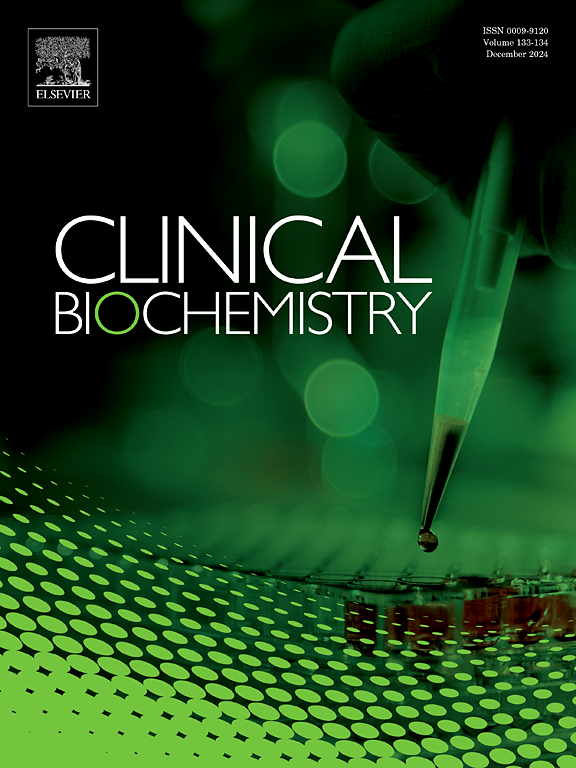Gaps in guideline adherence: evaluating HLA-B*57:01 screening for abacavir sensitivity and the implementation of evidence-based HIV care
IF 2.1
3区 医学
Q2 MEDICAL LABORATORY TECHNOLOGY
引用次数: 0
Abstract
Objective
Approximately 5–8 % of the population carries the HLA-B*57:01 allele, which increases the risk of severe hypersensitivity reactions to abacavir. Current guidelines and an FDA black box warning recommend HLA-B*57:01 screening for all patients before starting abacavir. We assessed the proportion of patients who undergo screening before initiating abacavir to evaluate adherence to guidelines.
Design
A retrospective cohort study using national IQVIA® PharMetrics Plus reimbursement data.
Methods
Data from the 2014-2022 IQVIA® PharMetrics Plus March 2023 dataset were analyzed. We identified patients aged ≥ 18 years who were newly prescribed abacavir, with ≥ 12 months of continuous enrollment before their first abacavir prescription. We examined the proportion of individuals who received HLA-B*57:01 screening any time before their initial abacavir prescription and conducted a multivariable logistic regression analysis on the receipt of HLA-B*57:01 screening adjusting for sex, age, year, and region.
Results
We identified 7,391 patients newly prescribed abacavir between 2014 and 2022. Approximately 46 % received an HLA-B*57:01 screen before initiation of abacavir. Annual screening rates ranged from 44 % to 50 % between 2015 and 2018 and dropped to 17 % by 2022. Screening was less likely to occur after 2018, compared to earlier in the study period, and more likely for younger as well as male patients.
Conclusions
These findings highlight broader challenges in HIV guideline adherence, emphasizing the need for ongoing evaluation and systematic interventions to improve implementation and patient safety.
指南依从性的差距:评估HLA-B*57:01筛查阿巴卡韦敏感性和基于证据的艾滋病毒护理的实施
目的:大约5- 8%的人群携带HLA-B*57:01等位基因,这增加了阿巴卡韦严重超敏反应的风险。目前的指南和FDA黑框警告建议在开始使用阿巴卡韦之前对所有患者进行HLA-B*57:01筛查。我们评估了在开始阿巴卡韦治疗前接受筛查的患者比例,以评估其对指南的依从性。设计采用国家IQVIA®PharMetrics Plus报销数据进行回顾性队列研究。方法:分析2014-2022年IQVIA®PharMetrics Plus 2023年3月数据集的数据。我们确定了年龄 ≥ 18 岁的新开阿巴卡韦的患者,在首次开阿巴卡韦处方前,患者连续入组时间 ≥ 12 个月。我们检查了在初始阿巴卡韦处方前接受HLA-B*57:01筛查的个体比例,并对接受HLA-B*57:01筛查的个体进行了多变量logistic回归分析,调整了性别、年龄、年份和地区。结果:我们在2014年 至 2022年间确定了7391名新开阿巴卡韦的患者。大约46% %在开始阿巴卡韦之前接受了HLA-B*57:01筛选。2015年至2018年间,年筛查率从44% %到50% %不等,到2022年降至17% %。与研究期间的早期相比,2018年之后进行筛查的可能性较小,年轻患者和男性患者更有可能进行筛查。结论:这些发现突出了艾滋病毒指南遵守方面的更广泛挑战,强调需要进行持续评估和系统干预,以改善实施和患者安全。
本文章由计算机程序翻译,如有差异,请以英文原文为准。
求助全文
约1分钟内获得全文
求助全文
来源期刊

Clinical biochemistry
医学-医学实验技术
CiteScore
5.10
自引率
0.00%
发文量
151
审稿时长
25 days
期刊介绍:
Clinical Biochemistry publishes articles relating to clinical chemistry, molecular biology and genetics, therapeutic drug monitoring and toxicology, laboratory immunology and laboratory medicine in general, with the focus on analytical and clinical investigation of laboratory tests in humans used for diagnosis, prognosis, treatment and therapy, and monitoring of disease.
 求助内容:
求助内容: 应助结果提醒方式:
应助结果提醒方式:


